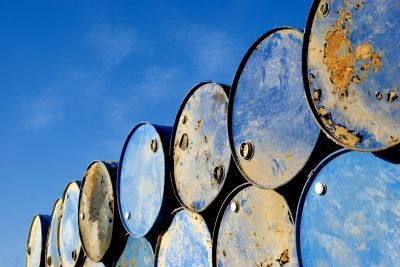IEA warns of huge cost for energy 'revolution'

The economic crisis gives the world a chance for a low-carbon "revolution" to ensure energy supplies and fight global warming, but it will cost a huge chunk of worldwide output, the IEA warns.
"The scale and breadth of the energy challenge is enormous - far greater than many people realise," the International Energy Agency said on Tuesday.
"But it can and must be met," it said. "The time to act has arrived."
The language from the usually staid agency, a branch of the OECD in Paris, amounted to an alarm call on the state of the world in terms of energy supplies and the threat of "disastrous climate change."
The IEA laid out the dangers, and its declaration for action, in its World Energy Outlook which falls this year shortly before a landmark international conference on climate change in Copenhagen in December.
The IEA is the energy arm of the Organisation for Economic Cooperation and Development, a policy powerhouse for the 30 leading industrialised countries.
If governments do not change their policies, there will be "alarming" consequences for energy security, and almost certainly "massive climate change and irreparable damage to the planet."
The agency estimated that even existing policies to ensure supplies to meet "inexorable" growth of demand and combat green-house gas damage would cost 26 trillion dollars (17.3 trillion euros) in real, or inflation adjusted, dollars for capital investment by 2030.
This cumulative bill was equivalent to 1.1 trillion dollars or 1.4 percent of world economic output per year, on average.
The power sector needed 53 percent of the total and more than half of the global figure was needed in developing countries.
But under its best-case hypothesis of greenhouse gases being limited to an increasingly accepted target of 450 parts per million of carbon dioxide, there would be an additional investment bill of 10.5 trillion dollars.
Of this extra amount, 45 percent was needed in the sector of transportation.
The total implied investment cost, in dollars valued in 2008 terms, is therefore about 36.5 trillion dollars over about 20 years.
The IEA said: "The recession, by curbing the growth in greenhouse-gas emissions, has made the task of transforming the energy sector easier by giving us an unprecedented, yet relatively narrow, window of opportunity."
The focus should be on investment in low-carbon technology, but "energy investment worldwide has plunged over the past year," the IEA said.
The IEA forecast that the oil price, excluding the effects of inflation, would be 100 dollars a barrel in 2020 and 115 dollars in 2030, saying oil demand would rise by one percent per year.
Global demand would rise from 85 million barrels per day in 2008 to 105 mbd in 2030, assuming that the negotiations in Copenhagen did not result in immediate big changes in energy policies, the IEA said.
The average oil price this year would be about 60 dollars per barrel against a background of weak economic activity.
The price would then rise with economic recovery to 115 dollars a barrel in 20 years' time in constant dollar valuations, meaning after stripping out the effect of inflation, the agency said.
In the last 12 months there had been "enormous upheavals in energy markets" but "the challenges of transforming the global energy system remain urgent and daunting."
Depending on how governments reacted to the challenges, falling investment would have far-reaching and potentially serious effects on "energy security, climate change and energy poverty," it warned.
There was therefore a risk of a supply shortage which "could lead to a renewed surge in prices in a few years down the line."
It said: "The financial crisis has cast a shadow over whether all the energy investment needed to meet growing energy needs can be mobilised."
But referring to the Copenhagen conference and the 450 parts-per-million target, it also declared:
"With a new international climate policy agreement, a comprehensive and rapid transformation in the way we produce, transport and use energy - a veritable low-carbon revolution - could put the world onto this 450-ppm trajectory."
This would put the world onto a "truly sustainable energy path."
Subscribe to Independent Premium to bookmark this article
Want to bookmark your favourite articles and stories to read or reference later? Start your Independent Premium subscription today.

Join our commenting forum
Join thought-provoking conversations, follow other Independent readers and see their replies